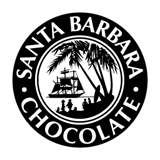
United States Statement on Contaminants
At Santa Barbara Chocolate, we take food safety and conformity with legislative and regulatory standards very seriously. Therefore, in addition to our commitment to following Good Manufacturing Practices (GMPs) and implementing HACCP and other quality control measures for assuring food safety, we conduct a Surveillance Program to periodically monitor for contaminants and assure they are maintained at the lowest level currently feasible.
In this Surveillance Program, samples are screened for heavy metals; mycotoxins (alfatoxins and ochratoxins); polycyclic aromatic hydrocarbons; dioxins; and dioxin-like polychlorinated biphenyls. For these analyses, Santa Barbara Chocolate contracts with independent ISO 17025 accredited labs to conduct the screenings.
These analyses are carried out on samples of cocoa beans, cocoa semi finished products and bulk, industrial chocolate products (chocolates, compounds, fat based fillings). Our program also includes analyses of dairy and nut ingredients. Samples used in the analyses are collected from our production sites worldwide.
In addition to our own Surveillance Program, we typically require our suppliers of processed raw materials to monitor for certain contaminants in the products they supply to us or otherwise certify the raw materials as meeting applicable requirements.
Based on the results of these analyses, we confirm our products are in compliance with the following relevant legislative and regulatory requirements:
- U.S. FDA Guidance for Industry: Lead in Candy Likely To Be Consumed Frequently by Small Children: Recommended Maximum Level and Enforcement Policy (November 2006 Docket No. 2005D0481);
- U.S. FDA Compliance Policy Guide Sec. 555.400 Foods – Adulteration with Aflatoxin;
- U.S. FDA Compliance Policy Guide Sec. 575.100 Pesticide Residues in Food and Feed;
- U.S. Code of Federal Regulations Title 40 Chapter I, Subchapter E Pesticide Programs Part 180: Tolerances And Exemptions For Pesticide Chemical Residues In Food; and
- California Proposition 65 Safe Drinking Water and Toxic Enforcement Act of 1986 (1)
- (1) Recent litigation filed in California has asserted the need for Proposition 65 warnings on certain high cacao content dark chocolate bars, cocoa powder and cocoa nibs due to the alleged levels of heavy metals. In 2003, parallel claims concerning chocolate failed due to (i) demonstrable exposure levels from actual product consumption data; and (ii) the exemption in Proposition 65 for naturally occurring chemicals in food. While we believe the current litigation will be similarly resolved, should the Proposition 65 warning thresholds be revised or reinterpreted such developments will implicate and require a response from the chocolate industry as a whole.
*This communication is intended to provide advice to Santa Barbara Chocolate customers upon their request. Our interpretation of the law does not represent a formal legal opinion, as we have not sought concurrence with the competent authorities. Customers are encouraged to consult with their own legal counsel.
